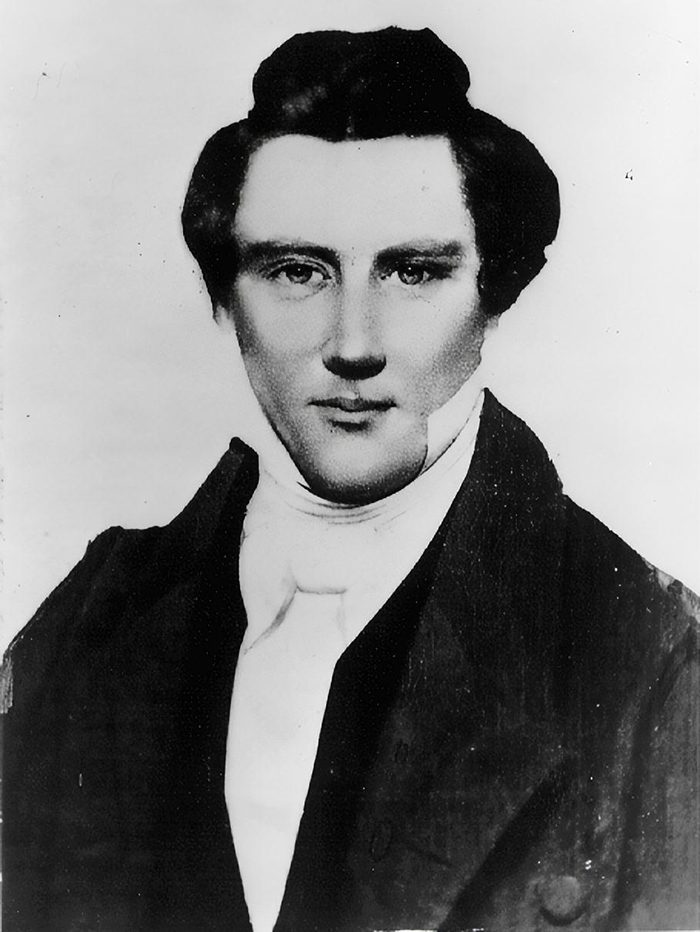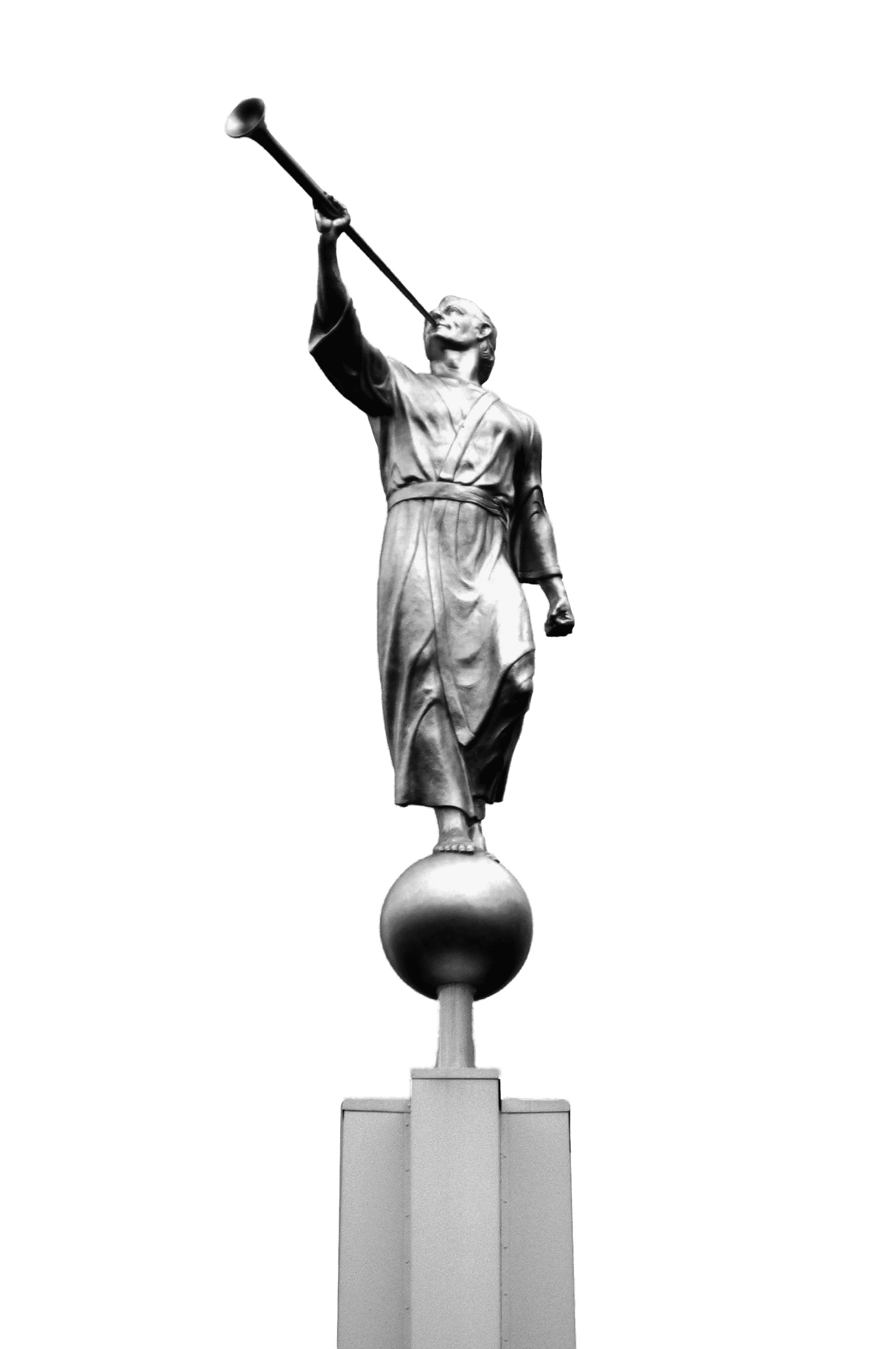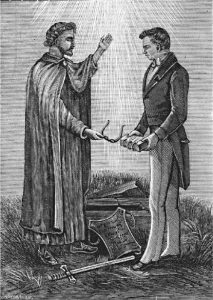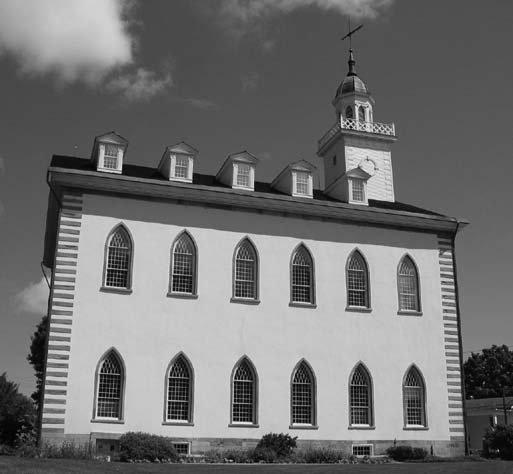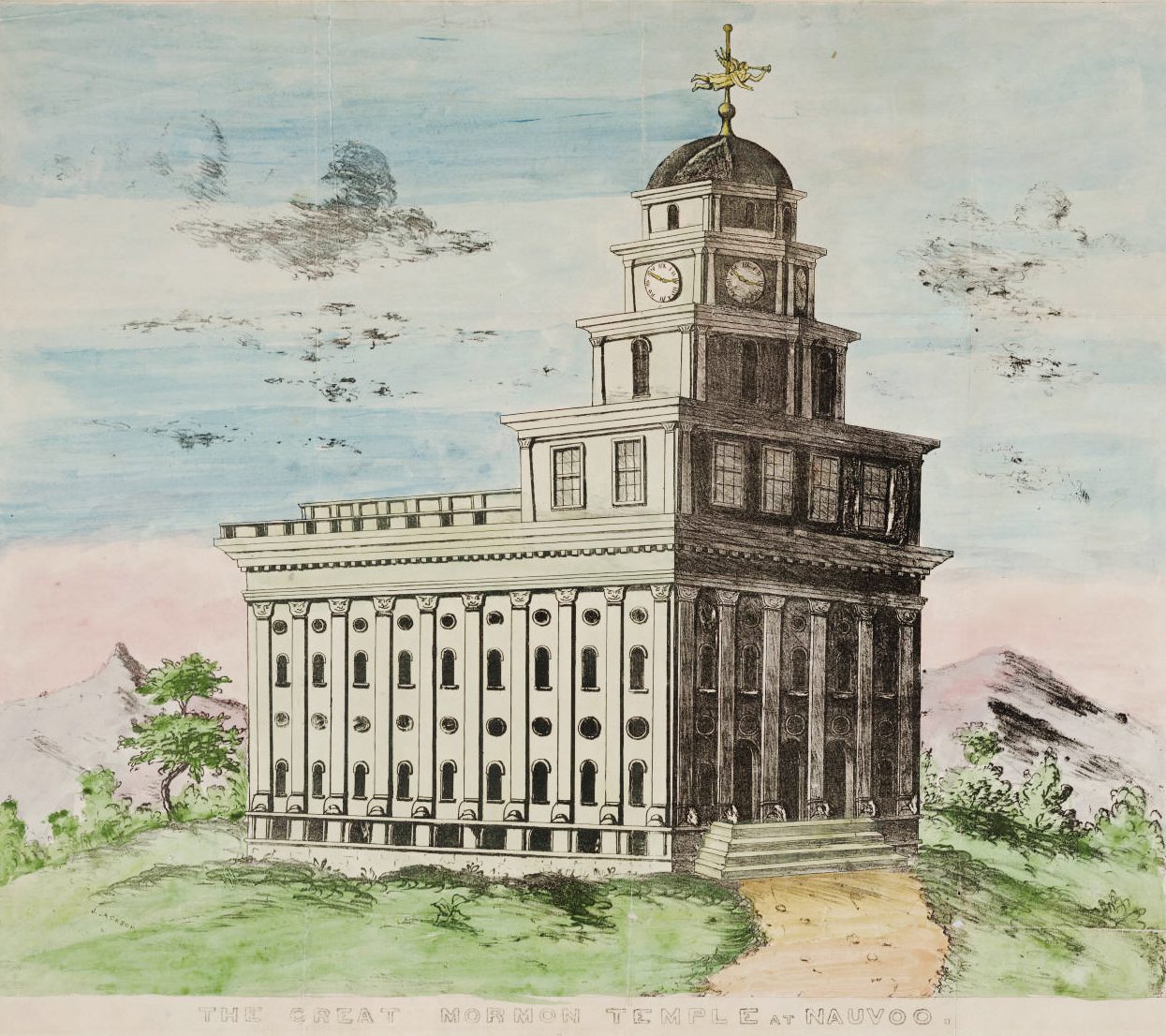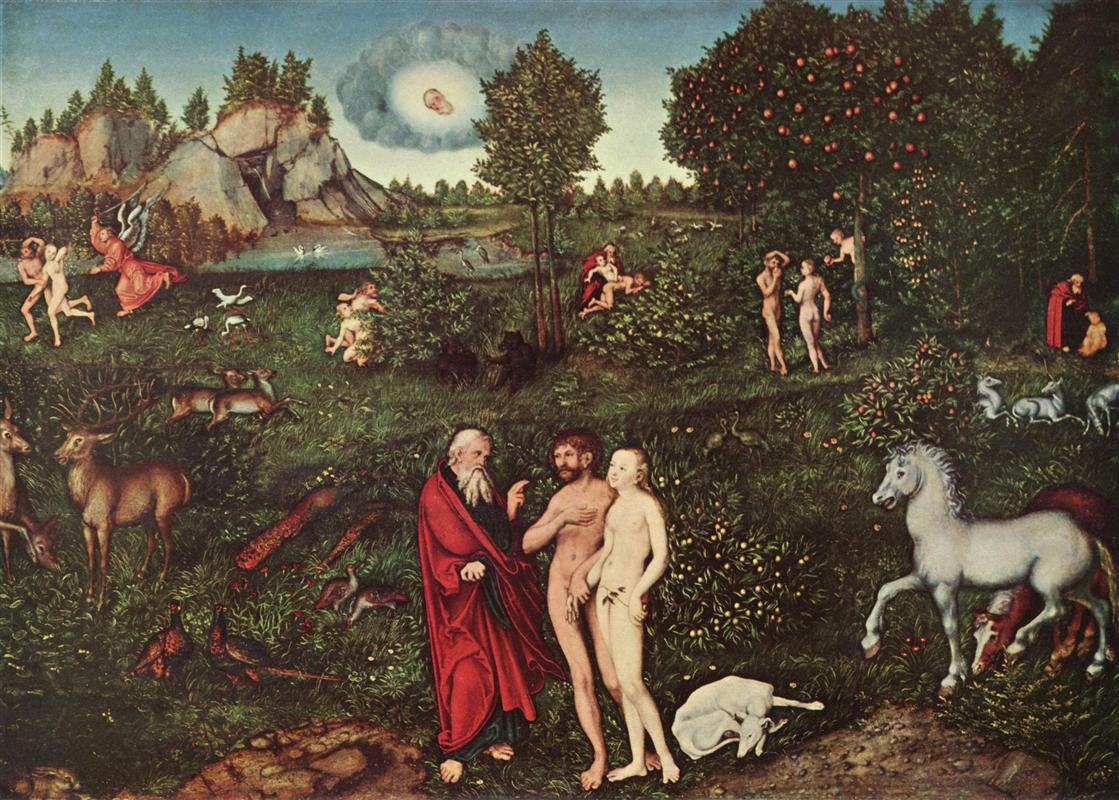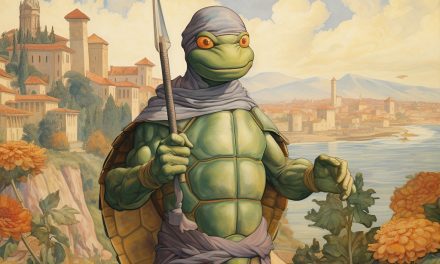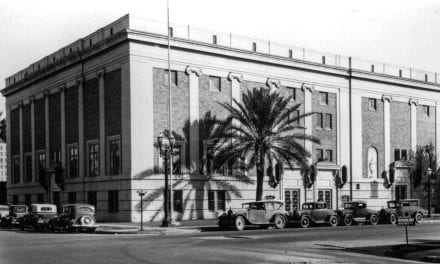Of Mormons and Masons
Written by Jacob Strong
Jacob Strong is a Master Mason from Prometheus Lodge #87 in Gilbert, AZ. Jacob has interests in religion and religious experience, ritual worship, philosophy, tarot, dream interpretation, Jungian psychology, Theosophy, and Hermeticism.
While there have been some who have attributed the Latter-day Saint (LDS) religion primarily to Joseph Smith Jr.’s brief time in Masonry, the history paints a far more complex and nuanced picture. Joseph Smith Jr., the founder of the LDS religion, published the faith’s key theological text, The Book of Mormon, in 1830. Far from having a clear picture and direction from the start, Joseph’s developmental theology pulled from the religious milieu of his time, of which Masonry played a part. It behooves us to start with an overview of the theological and occult influences that existed in the minutia of Joseph’s religious upbringing.
Joseph Smith Jr.’s Background and Influences
Joseph Smith grew up in a time of much religious commotion, often called the Second Great Awakening. The Second Great Awakening was a phenomenon that occurred in the United States from the late 1700’s to the mid 1800’s that gave rise to Evangelical Christianity[i]. The era was characterized by enthusiastic preachers who held “camp meetings” (large church gatherings) not unlike so called super churches in our day, which saw mass conversions. Both Baptists and Methodists saw a huge growth in numbers[ii].
Though the Smith family was religious, they mostly stayed clear of organized religion. Joseph Jr. attended meetings with a Methodist group for a time[i]. His mother, Lucy, flirted with Presbyterianism and Methodism, though was baptized by a minister who didn’t require her to join a sect[ii]. Joseph Smith’s father, Joseph Sr., had a brief fling with Universalism, mostly due to pressure from his father, it seems[iii]. Joseph Sr. was the least inclined to organized religion of the family, being more interested in a restoration of the ancient order of things[iv].
From a local, Luman Walter, and his father, Joseph Sr., Joseph Jr. became acquainted with the occult arts[i]. Joseph was a noted treasure digger and practitioner of scrying (Sometimes known as “peeping” or “divination”. The practitioner looks in a medium, often a crystal or stone, and divines messages or visions.), being employed for a time as such. When Joseph was producing the Book of Mormon, he did so exclusively by scrying with various seer stones he owned. In addition to practicing divining and scrying, Joseph owned many occult artifacts including a dagger for use in rituals, magick parchments, a Jupiter talisman (his ruling planet), and more than likely utilized astrology to determine when certain acts should be performed (including many of his marriages).
It has been suggested that Joseph’s meeting with Moroni (the angel who gave him the plates from which he produced the Book of Mormon) was the result of Joseph’s magickal invoking.[ii] For a full treatment of the subject, D. Michael Quinn’s preeminent, “Early Mormonism and the Magic World View” is an excellent resource. In brief, Joseph prayed to “commune with some kind of messenger” on Sunday the 21st, at the Autumnal equinox. Jupiter, Smith’s ruling planet, ruled Sunday, and Jupiter was the most prominent astrological symbol on the family’s “Holiness to the Lord” magick parchment. The parchment was designed with the express purpose of invoking a good spirit. Joseph’s invoking on a Sunday matches Agrippa’s instructions for receiving an “Oracle from the good spirits”. The presence of the Tetragrammaton (the Hebrew name for God; rendered as either JHVH or YHWH in print) is a clear indicator of magickal intent. The Spirit also appeared three times to Joseph that night and departed just before sunrise on the final visit.
Myth informs us that Joseph Smith Sr. was a Freemason, though there are no contemporary records available to prove such[i]. Joseph’s brother, Hyrum, on the other hand, was a member of Mount Moriah lodge at some point in the 1820’s while living in Palmyra[ii].
Given the amount of occult literature that was being produced and sold in America, it is more than likely that Joseph had owned, borrowed, or had access to at least some occult texts circulating at the time[iii]. In particular, it is likely Smith either owned or had access to Sibly’s Occult Sciences, Scot’s Discovery of Witchcraft, and Barrett’s The Magus.[iv]
From a more Perennialist view, there are ample other influences that existed in late Colonial and Post-Revolutionary America and colonial era Europe. I will name just a few with particular interest to the LDS tradition. In Beissel’s Ephrata, a strict, celibate, monastic Christian community established in Pennsylvania[i], there was a Conrad Weisser who was anointed a priest of Melchizidek with the new name “Enoch”[ii]. There was the Harmony Society which was a pietist society that existed from 1804 until it eventually fizzled out in 1906. The Harmony Society in particular were interesting in that they also had elements of esotericism, sought to be a communal and industrious society, and fell squarely within the millenarianist tradition[iii]. The practice of non-infant baptism has a counterpart in the Anabaptist movement[iv].
All of these ideas would make their way into LDS theology in varying degrees, ultimately culminating in a theology built up around a communion with God through a house, or temple, dedicated to Him.
Kirtland Temple
In December of 1832, Joseph received a revelation that makes first mention of their need for a temple (Doctrine & Covenants 88:119). While a temple was devoid of any significant cultural connotations in the realm of Christianity in 19th century America, Joseph’s temple would serve as the spiritual hub for his religion[i]. His two-floor Kirtland temple would be used as a regular church meeting house on the main floor, house the “School of the Prophets”, or a society that promoted learning and study among the leadership of the church, on the upper floor, and contain some office space in the attic[ii].
The form of the temple was oblong with sets of ascending podiums and benches on either side; one for the Aaronic priesthood to sit, the other, the Melchizidek or “higher”, priesthood. In between was a pew system that allowed congregants to swivel in either direction in order to face whomever was addressing them from either side. Perhaps one of the more interesting features was a system of ropes and pulleys that allowed curtains to drop from the ceiling, partitioning sections off that could be used as temporary rooms. These were almost reminiscent of the veils partitioning off the temple of Solomon[i].
One struggles to find much, if any, Masonry in early LDS temple worship. In Joseph’s revelations, there were talks of an “Endowment of power” coming to the Saints once the temple was completed. Seemingly, in preparation of this, we observe Smith instituting ritual worship among his following. The earliest recorded ritual to take place in the temple was in 1833 and consisted of Joseph washing the feet of thirteen of his congregants, in similitude of Christ in the New Testament. In 1836, Joseph instituted a new washing that consisted of petitioning the Lord, washing each other’s bodies, and perfuming themselves with cinnamon infused whiskey. A week later, this group of men again congregated in the temple, gathered in a circle, consecrated oil, and anointed and blessed each other in turn[ii].
During the days of dedication (March 27-30, 1836) of the Kirtland temple, they held a rather intense worship service. There were lectures, a dedicatory prayer, fasting, the sacrament dispersed, washings, anointings, shouts of Hosanna, and continued supplication to God. This satisfied Joseph for the time as being his ‘Endowment’, and in his journal he records that this was the “day of Pentecost”[iii].
From Nauvoo to Present
Joseph would come to spend the last years of life in what became Nauvoo, Illinois. Here, some of his most radical and interesting theological assertions would come to light. In the interim between leaving Kirtland and establishing a Nauvoo temple, Baptisms for the dead (a baptism for a dead individual by proxy) were introduced and were practiced in rivers with the ultimate goal of practicing them in the temple[i]. There is evidence that Joseph was practicing polygamy as early as 1835 and he married somewhere in the vicinity of 30 women in his last years in Nauvoo[ii]. Plural marriage would ultimately culminate in temple marriage or “sealing” for time and eternity.
Of particular interest to masons is, of course, what would become the new temple Endowment in Nauvoo. Far from the Pentecostal and ecstatic religious experience in the Kirtland temple, this ritual worship would be a progressive mystery ritual that would eventually be standardized by Brigham Young[iii].
Joseph Smith was made a mason at sight (without needing to prove proficiency between degrees) and had his Entered Apprentice degree on March 15, 1842 and received the degrees of Fellowcraft and Master Mason the following day. It seems quite apparent in retrospect that both Abraham Jonas (Grand Master at the time and the individual who gave approval for Joseph to be made a mason at sight) and James Adams (who encouraged Mormons to apply for the masonic degrees) had ulterior motives in befriending the Mormons at Nauvoo[i]. After Jonas had installed the new officers at the Nauvoo lodge and initiated many prominent Mormons, he was shortly thereafter elected to the Illinois legislature with the help of his new voting block[ii].
Roughly six weeks after becoming a Mason Joseph initiated nine men into his new Endowment on the 4th and 5th of May 1842. Not much is known about this first Endowment as there exists no explicit record and no real extrapolation beyond vague allusions. Heber C. Kimball wrote in 1842 that “There is a similarity of preast Hood in Masonry. Br. Joseph Ses Masonry was taken from preasthood but has become degenerated. But many things are perfect”(sic). We have a secondhand account of Brigham Young saying of the Endowment that it was “Celestial Masonry”[iii]. In Brigham Young’s brief explanation of the Endowment, he mentions washing, anointing, receiving a garment, a name, signs, tokens, penalties and instructions or lectures[iv]. Perhaps most interesting is that there exists no written record of any formal revelation pertaining to receiving the content of the Endowment. For a man so ardent about keeping a written record of revelation, and considering that the Endowment is the pinnacle of worship in the faith, the absence of revelation on it is striking[v].
One of the earliest, if not the earliest, exposés of the LDS temple Endowment was published by Catherine Lewis in 1848. She had joined the LDS faith in 1841 while living in Boston and received her Endowment sometime after Joseph’s death in 1844[vi]. While there are key points that have stayed the same, much has evolved since the days of Catherine Lewis. Likewise, while any Mason can see similarities in Duncan’s exposé, there are distinct differences from jurisdiction to jurisdiction and more standard American practices versus British practices. While the particulars between both would be improper to discuss among the profane, we can still decipher and discuss much that will provide illumination on the subject.of the Mormon Temple Endowment Ceremony.
While the Masonic myth presents us with the building of KST and the legend of our GMHA, the LDS temple myth is focused primarily on the Godhead, Adam, Eve, and mankind’s descent into mortality and our re-ascension out of mortality. The narrative of the Endowment more or less follows the creation myth presented in Christianity and Judaism with some key changes for the initiate. While some parallels may exist depending on what interpretive lens one chooses to look at the Masonic myth with, the LDS Endowment is couched in a Christian ethic and mythos.
The importance of the Atonement of Jesus Christ and intercession of God on our behalf is a central theme to the LDS temple. Whereas, within the walls of the Masonic Temple, no allusion to the Atonement of Christ is made and we use only a generic name for Deity and any mention of a particular Deity would be most unwelcome. While it is true that Masons use the Bible on the altar, we make no discrimination between other books of holy writ and any and all brothers’ sacred books may be present during our ritual. In the Endowment, progression from pre through post life is mystically mapped out and specific covenants relating to key theological aspects of the faith are made at certain points within the ritual.
Those distinctly Masonic teachings of the liberal arts and sciences are not made mention of in any context within the LDS Endowment. The only tools of our craft that make an appearance in the Endowment, is that of the square and compass. However, they are never presented in a similar orientation or fashion and the brief lecture appertaining to them contains only a partial reference (that of one or two sentences) to those particular teachings contained in Masonry. It is true that there are similarities in some grips; however, the character, nature, purpose, and key words of said grips, are different. LDS members would have no idea of how to use the grips of a Mason, and vice versa. The secrets of either one are safe within their contexts.
“We then held up both hands above the head and placed our right hand under the left ear, drew it across the throat and the left hand was placed to the right shoulder, then drawn acroas(sic) the breast, and the right hand suddenly thrust down the right side[i].”
Having received my own Endowment after the penalties were taken out, I feel no obligation to not speak on them. I quote from Catherine Lewis in regards to them; after making a particular covenant (which has been revised), “We then held up both hands above the head and placed our right hand under the left ear, drew it across the throat and the left hand was placed to the right shoulder, then drawn acroas(sic) the breast, and the right hand suddenly thrust down the right side[i].” While those penalties at one point had wording associated with them that would appear familiar to any mason, the wording eventually shifted in the 1920’s; an initiate “would suffer my life to be taken”, rather than reveal the covenant and knowledge given. In 1990, in response to a survey the church conducted about temple worship, the penalties were dropped altogether[ii] and the wording changed to merely reflect the severity and importance of covenanting with God.
Mormon and
Masonic Aprons
While it is no secret that Masons have aprons, less known is that Latter-Day Saints also adopted aprons as part of their ritual dress. Whereas the Masonic Apron is a white lambskin apron, the LDS apron is green. In the Masonic system the apron consists almost entirely of our ritual dress minus the clothes for the initiate, but in the LDS system the temple clothes consist of a bonnet or cap for the men, a veil for the women (which is no longer used for women in any meaningful way), robes, a sash, and some white shoes or slippers.
Although, the Masonic initiate has the great benefit of lectures appertaining to and expounding upon all parts of our degree including our dress, the LDS initiate is left without context for almost any part of the ceremony and it is instead left up to individual interpretation, within a certain theological framework. At one point, there used to be lectures at the veil of the temple before the final room of the Endowment, but they were not rote lectures delivered, as the time varied from under an hour, to several hours[i].
While the Masonic system consists of three degrees (that of Entered Apprentice, Fellowcraft, and Master Mason), the LDS system contains no such distinctions. The LDS system follows more or less the sacraments contained in the Gospel of Phillip, “The master [did] everything in a mystery: baptism, chrism, eucharist, redemption, and bridal chamber”[ii]. Members of the LDS faith are baptized for themselves outside the temple (in a ritual open for all invited to attend), and confirmed a member of the church (a ritual blessing) immediately following or performed at a general church meeting. After one is baptized and confirmed a member of the church, one can partake of the eucharist (although little children and non-members often partake of the eucharist with no consequences, even if the practice is discouraged). The same practices of baptism and confirmation are performed symbolically in the temple for family members or ancestors who have died without receiving the faith. The highest forms of worship, those of chrism, redemption, and the bridal chamber are reserved solely for the temple. Although in early LDS temple rites, initiates washed their entire bodies, perfumed, and were anointed with a seemingly large quantity of oil, they only symbolically repeat those rites in the modern era with rote prayers repeated. The Bridal chamber, or the sealing of husband and wife for eternity, has no distinct masonic import and couldn’t possibly, considering all regular masonry is closed to women. While the Endowment is the pinnacle of worship, the sealing of husband and wife is the crowning experience within the temple and is closed off to those not “endowed”.
In closing, the two systems exist wholly independently of one another and contain distinctly different mythos, ethos, and egregores. The LDS temple has never tried to be a clandestine lodge or to be a substitute for regular Masonry. To be sure, there were distinctly masonic elements that were borrowed, but it raises the question, how much can you take away from Masonry, and it still be considered Masonry?
Written by Jacob Strong
Footnotes
The Second Great Awakening. [webpage] lumen.
Available From: https://courses.lumenlearning.com/boundless-ushistory/chapter/the-second-great-awakening/
[October 12, 2021]
[i] Religious Transformation and the Second Great Awakening. [webpage] U.S. History.
Available From: https://www.ushistory.org/us/22c.asp
[October 12, 2021]
[ii] Joseph Smith, 1989. Book Of Mormon, Joseph Smith – History. Salt Lake City, Utah: The Church of Jesus Christ of Latter-day Saints. p. 47-48.
[iii] Bushman, R., 2005. Joseph Smith: Rough Stone Rolling. 1 ed. New York: Alfred A. Knopf. p. 25.
[iv] Bushman, R., 2005. Joseph Smith: Rough Stone Rolling. 1 ed. New York: Alfred A. Knopf. p. 16-17, 25.
[v] John L. Brooke, 1996. The Refiner’s Fire: The Making of Mormon Cosmology, 1644-1844. 2 ed. New York: Cambridge University Press. p. 145.
[vi] John L. Brooke, 1996. The Refiner’s Fire: The Making of Mormon Cosmology, 1644-1844. 2 ed. New York: Cambridge University Press. p. 152.
[vii] D. Michael Quinn, 2016. Early Mormonism and the Magic World View. [Kindle] Signature Books.
[viii] John L. Brooke, 1996. The Refiner’s Fire: The Making of Mormon Cosmology, 1644-1844. 2 ed. New York: Cambridge University Press. p. 152.
[ix] John L. Brooke, 1996. The Refiner’s Fire: The Making of Mormon Cosmology, 1644-1844. 2 ed. New York: Cambridge University Press. p. 140.
[x] Quinn, D. M., 2016. Early Mormonism and the Magic World View. [Kindle] Signature Books.
[June 22, 2019]
[xi] D. Michael Quinn, 2016. Early Mormonism and the Magic World View. [Kindle] Signature Books.
[xii] Ephrata Cloister. [webpage]
Available From: https://en.wikipedia.org/wiki/Ephrata_Cloister
[October 12, 2021]
[xii] John L. Brooke, 1996. The Refiner’s Fire: The Making of Mormon Cosmology, 1644-1844. 2 ed. New York: Cambridge University Press. p. 125.
[xiv] [Website]
Available from: https://en.wikipedia.org/wiki/Harmony_Society
[June 2021]
[xv] [Website]
Available from: https://en.wikipedia.org/wiki/Anabaptism
[June 2021]
[xvi] Bushman, R., 2005. Joseph Smith: Rough Stone Rolling. 1 ed. New York: Alfred A. Knopf. p. 216.
[xvii] Bushman, R., 2005. Joseph Smith: Rough Stone Rolling. 1 ed. New York: Alfred A. Knopf. p. 217.
[xviii] Bushman, R., 2005. Joseph Smith: Rough Stone Rolling. 1 ed. New York: Alfred A. Knopf. p. 218.
[xix] Bushman, R., 2005. Joseph Smith: Rough Stone Rolling. 1 ed. New York: Alfred A. Knopf. p. 311.
[xx] Bushman, R., 2005. Joseph Smith: Rough Stone Rolling. 1 ed. New York: Alfred A. Knopf. p. 316-318.
[xxi] Bushman, R., 2005. Joseph Smith: Rough Stone Rolling. 1 ed. New York: Alfred A. Knopf. p. 218.
[xxii] Bushman, R., 2005. Joseph Smith: Rough Stone Rolling. 1 ed. New York: Alfred A. Knopf. p. 311.
[xxiii] Bushman, R., 2005. Joseph Smith: Rough Stone Rolling. 1 ed. New York: Alfred A. Knopf. p. 316-318.
[xxiv] Bushman, R., 2005. Joseph Smith: Rough Stone Rolling. 1 ed. New York: Alfred A. Knopf. p. 422.
[xxv] Bushman, R., 2005. Joseph Smith: Rough Stone Rolling. 1 ed. New York: Alfred A. Knopf. p. 437.
[xxvi] David John Buerger, The Development of the Mormon Temple Endowment Ceremony. [PDF] Dialogue Journal.
Available From: https://www.dialoguejournal.com/wp-content/uploads/sbi/articles/Dialogue_V34N0102_87.pdf
[June 21, 2019]
[xxvii] Bushman, R., 2005. Joseph Smith: Rough Stone Rolling. 1 ed. New York: Alfred A. Knopf. p. 449-450.
[xxviii] Hogan, M. B.Mormonism and Freemasonry: The Illinois Episode. 1 ed. Salt Lake City, Utah: Macoy Publishing & Masonic Supply Co., Inc. p. 313.
[xxix] David John Buerger, The Development of the Mormon Temple Endowment Ceremony. [PDF] Dialogue Journal.
Available From: https://www.dialoguejournal.com/wp-content/uploads/sbi/articles/Dialogue_V34N0102_87.pdf
[June 21, 2019]
[xxx] David John Buerger, The Development of the Mormon Temple Endowment Ceremony. [PDF] Dialogue Journal.
Available From: https://www.dialoguejournal.com/wp-content/uploads/sbi/articles/Dialogue_V34N0102_87.pdf
[June 21, 2019]
[xxxi] David John Buerger, The Development of the Mormon Temple Endowment Ceremony. [PDF] Dialogue Journal.
Available From: https://www.dialoguejournal.com/wp-content/uploads/sbi/articles/Dialogue_V34N0102_87.pdf
[June 21, 2019]
[xxxii] David John Buerger, The Development of the Mormon Temple Endowment Ceremony. [PDF] Dialogue Journal.
Available From: https://www.dialoguejournal.com/wp-content/uploads/sbi/articles/Dialogue_V34N0102_87.pdf
[June 21, 2019]
[xxxiii] Lewis, C., 1848. Proceedings of the Mormons; Giving an Account of their Iniquities, with Particulars Concerning the Training of the Indians by Them, Description of the Mode of Endowment, Plurality of Wives, &c., &c. [PDF]
Available from: https://ia800309.us.archive.org/31/items/CatherineLewisNarrative/Catherine%20Lewis%20Narrative.pdf (2)
[May 17, 2021]
[xxxiv] Steinfels, P., 1990. Mormons Drop Rites Opposed by Women. [Webpage] The New York Times, May 3, 1990.
Available From: https://www.nytimes.com/1990/05/03/us/mormons-drop-rites-opposed-by-women.html
[May 2021]
[xxxv] David John Buerger, The Development of the Mormon Temple Endowment Ceremony. [PDF] Dialogue Journal.
Available From: https://www.dialoguejournal.com/wp-content/uploads/sbi/articles/Dialogue_V34N0102_87.pdf
[June 21, 2019]
[xxxvi] Marvin W. Meyer & James M. Robinson, 2008. The Nag Hammadi Scriptures: The Revised and Updated Translation of Sacred Gnostic Texts Complete in One Volume. HarperOne.
